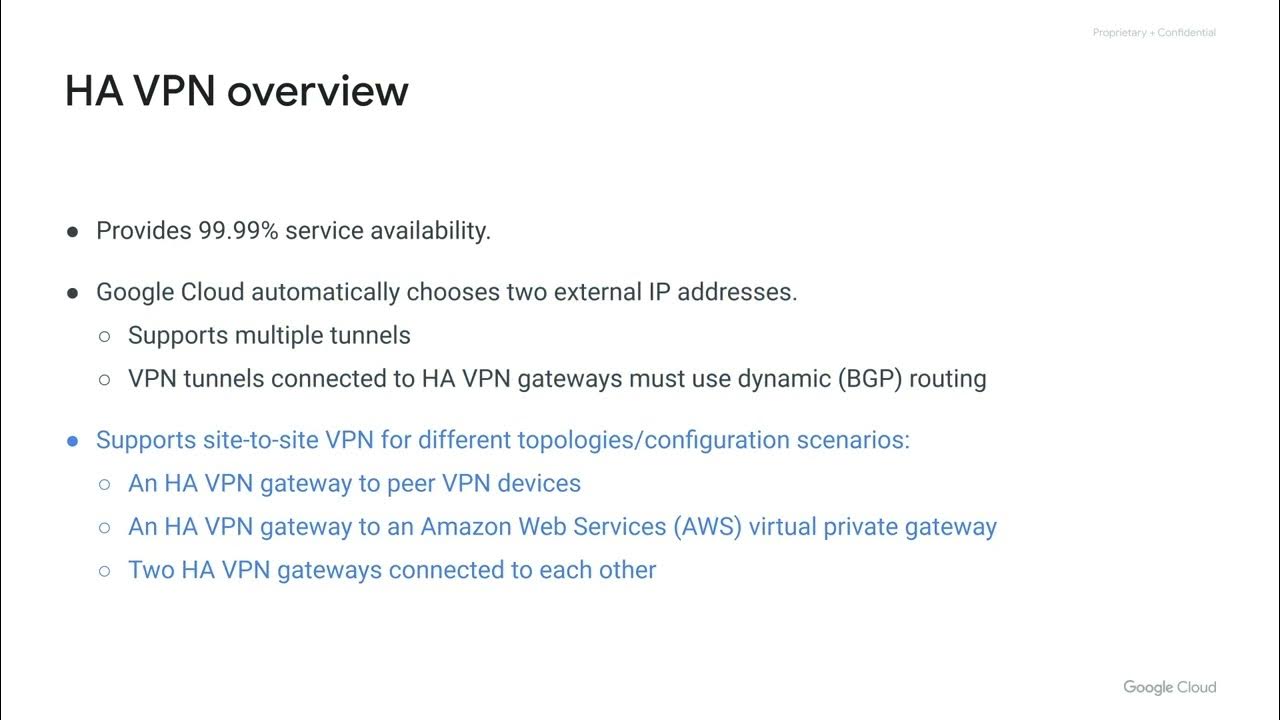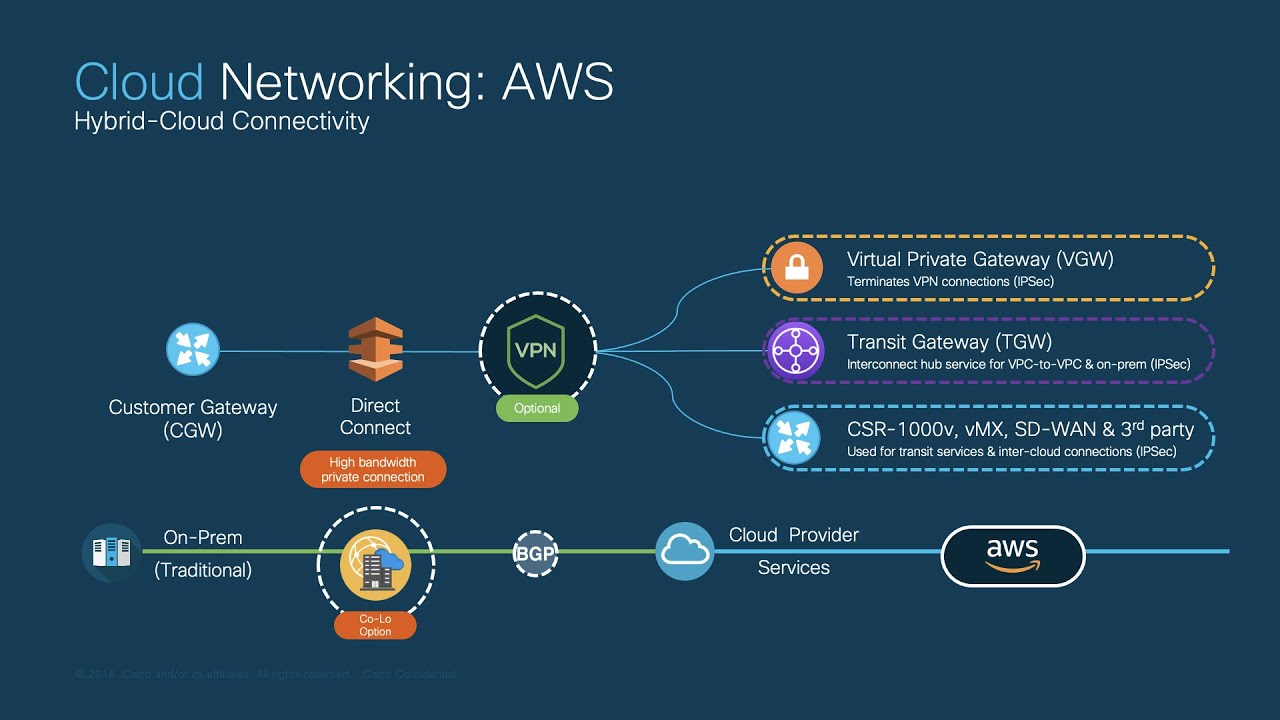AWS Solution Architect Interview Questions and Answers - Part 2
Summary
TLDRThis video script delves into various AWS services and their applications, including VPC peering and Transit Gateway for VPC connectivity, AWS Direct Connect and Site-to-Site VPN for secure network connections. It explores AWS X-Ray for microservices monitoring, AWS DMS for database migration, and AWS WAF and Shield for web application security. CloudFront, NAT Gateway, and Amazon Location Service are highlighted for content delivery and geolocation triggers. The script also covers IoT Core and Timestream for handling high-volume sensor data, AWS Global Accelerator for improving application performance, and AWS Security Hub for security management. Additionally, it discusses WebSockets with API Gateway, Amazon Kinesis for scalable data processing, and strategies for implementing CI/CD pipelines and microservices architecture on AWS.
Takeaways
- 🔗 **VPC Peering**: Connect two AWS VPCs for private communication using internal IP addresses without a network hub or transitive connections.
- 🌐 **Transit Gateway**: Simplify the connection of multiple VPCs and on-premise networks, acting as a central hub to reduce complex configurations.
- 🌱 **AWS Direct Connect**: Establish a dedicated, high-bandwidth network connection from your on-premise network to AWS, bypassing the public internet.
- 🔒 **AWS WAF**: Protect web applications from common web exploits like SQL injection and cross-site scripting by defining security rules.
- 🛡️ **AWS Shield**: A managed DDoS protection service that safeguards applications from distributed denial of service attacks, with both free and paid tiers.
- 🌍 **Amazon CloudFront**: Accelerate content delivery to global users by caching data in edge locations, reducing latency and improving load times.
- 🌁 **NAT Gateway**: Enable internet access for EC2 instances in a private subnet within a VPC while preventing inbound internet connections.
- 📍 **Amazon Location Service**: Utilize geofencing to trigger events when tracked vehicles enter specific geographic areas, useful for delivery notifications.
- 🌊 **AWS IoT Core**: Efficiently ingest and store high volumes of real-time sensor data from IoT devices, facilitating time-based analysis.
- ⏱️ **AWS Timestream**: A scalable time series database for storing large streams of data points with timestamps, ideal for sensor readings and metrics.
- 🌟 **AWS Global Accelerator**: Improve the availability and performance of internet applications by routing user traffic over the AWS network to the application endpoint.
Q & A
What is VPC Peering and how does it facilitate communication between two VPCs?
-VPC Peering is a service that allows you to connect two VPCs privately using their internal IP addresses. It creates a direct network route between the VPCs, enabling them to communicate as if they are within the same network. However, it doesn't work like a network hub and cannot be used to create a transitive connection between other VPCs.
How can multiple VPCs be interconnected in a more centralized manner?
-A Transit Gateway can be used to interconnect multiple VPCs. It acts as a central hub, simplifying the connections between them and reducing the complexity of configurations compared to the point-to-point approach of VPC peering.
What is AWS Direct Connect and how does it benefit on-premise networks?
-AWS Direct Connect establishes a dedicated, high-bandwidth network connection between an on-premise network and AWS. This connection bypasses the public internet, providing a more secure and consistent network experience for data transfer.
What is the difference between a site-to-site VPN and AWS Direct Connect?
-A site-to-site VPN creates a secure, encrypted tunnel using IPsec to connect an on-premise network to a VPC in AWS, allowing controlled private communication over a secure tunnel. In contrast, AWS Direct Connect provides a dedicated network connection that bypasses the public internet for more consistent and secure connectivity.
How can AWS X-Ray be utilized to trace requests in a microservices application?
-AWS X-Ray can track requests as they flow through a microservices application, including across Lambda functions and other services. It helps in identifying bottlenecks, visualizing the request flow, and debugging issues by providing insights into the performance and behavior of the application.
What role does AWS DMS play in migrating databases and exporting data to S3?
-AWS Database Migration Service (DMS) facilitates the migration of data from one database to another, whether within AWS or between an on-premise environment and AWS. It can perform an initial full data export to S3 and then continuously replicate changes to keep the data synchronized.
How can AWS WAF help in securing web applications against common web exploits?
-AWS Web Application Firewall (WAF) creates a security layer for web applications, protecting them from malicious attacks such as SQL injection and cross-site scripting. It allows defining rules to block suspicious traffic, permit legitimate requests, and monitor web traffic for security threats.
What is AWS Shield and how does it protect applications from DDoS attacks?
-AWS Shield is a managed DDoS protection service that safeguards applications on AWS from distributed denial of service attacks. It offers two tiers: a free tier for basic protection and a paid tier for enhanced DDoS mitigation and response capabilities.
How can AWS CloudFront be used to deliver static content faster to end users globally?
-AWS CloudFront is a content delivery network service that caches website and app content like images and videos in a global network of edge locations. This allows users to access the content from the closest edge location, reducing latency and improving load times.
What is the role of a NAT Gateway in enabling internet access for EC2 instances in a private subnet?
-A NAT Gateway allows EC2 instances in a private subnet to connect to the internet while preventing inbound connections from the internet. It acts as a translator, converting private IP addresses to public IPs for outbound traffic without exposing the instances directly to the internet.
How can Amazon Location Service be used to generate triggers for tracked vehicles entering specific geographic areas?
-Amazon Location Service can be used to add location functionality to applications. It features geofencing, which allows defining virtual boundaries. When tracked vehicles enter or leave these geofences, it triggers geofence events that can be used to send alerts or initiate other actions.
How can AWS IoT Core and Timestream be utilized for ingesting and storing high volumes of sensor data from IoT devices?
-AWS IoT Core can receive sensor data from IoT devices via MQTT. The data is then filtered and routed using IoT Core rules and stored in Amazon Timestream, a fast, scalable time series database designed to efficiently store and analyze large streams of data points with timestamps.
What is the benefit of using AWS Global Accelerator for an e-commerce company with a global audience?
-AWS Global Accelerator uses static anycast IP addresses to route user traffic over the fast AWS network to the application endpoint, bypassing the public internet. This improves the availability and performance of internet applications, reducing latency for users accessing the application from different geographical locations.
How does AWS Security Hub help in managing the security of AWS resources?
-AWS Security Hub provides a central dashboard for security findings, collecting data from AWS security services, partner tools, and custom integrations. It allows for the aggregation and visualization of the security status of AWS resources and can trigger actions based on the findings through CloudWatch events.
What is the function of API Gateway in establishing asynchronous, bidirectional messaging connections?
-API Gateway facilitates real-time, two-way communication between web clients and backend services on AWS using WebSockets. It establishes a full-duplex, persistent connection for bidirectional data flow, which is ideal for scenarios like live updates in chat apps or collaborative editing.
How does Amazon Kinesis achieve high scalability and fast data processing?
-Amazon Kinesis has a distributed architecture that allows it to distribute data processing workloads across multiple resources. It uses partition keys to distribute data records across shards, which can be processed independently in parallel. Kinesis can dynamically scale the number of shards to handle increased data injection rates and maintain high-speed processing.
What is a typical structure of a CI/CD pipeline in AWS?
-A typical CI/CD pipeline in AWS involves developers committing code to AWS CodeCommit, which then triggers AWS CodeBuild to compile the code, run tests, and produce deployment-ready packages. Finally, AWS CodeDeploy or CodePipeline takes over to deploy these packages to the chosen target for running the application.
How can microservices be implemented in AWS, and what are the different deployment options?
-Microservices can be implemented in AWS using Lambda functions, with each service having its own data storage and API Gateway routing requests. Alternatively, microservices can be deployed in containers managed by AWS Fargate, which provides a serverless container management service.
How can multi-protocol traffic be handled using load balancers in AWS?
-AWS allows handling multi-protocol traffic using Network Load Balancers (for TCP on Port 80) and Application Load Balancers (for UDP on Port 53). The Network Load Balancer can forward TCP traffic to an Application Load Balancer target group, while the UDP traffic is forwarded to another target group with instances that accept UDP traffic.
How can an e-commerce company make raw data from CSV files accessible for analysis using ad hoc SQL queries?
-The company can use AWS services to create a data lake with raw and processed buckets. AWS Glue can crawl and catalog the data, and AWS Glue jobs can clean and transform the raw data into a query-efficient format like Parquet. Analysts can then run ad hoc SQL queries using Amazon Athena against the data in the processed bucket.
Outlines

This section is available to paid users only. Please upgrade to access this part.
Upgrade NowMindmap

This section is available to paid users only. Please upgrade to access this part.
Upgrade NowKeywords

This section is available to paid users only. Please upgrade to access this part.
Upgrade NowHighlights

This section is available to paid users only. Please upgrade to access this part.
Upgrade NowTranscripts

This section is available to paid users only. Please upgrade to access this part.
Upgrade NowBrowse More Related Video

AWS Academy Cloud Foundations - Module 5 - Part 1

Connecting Networks

Cloud Networking Overview (Using AWS as reference)

AWS VPC Tutorial | Membuat VPC, Subnet, Route Table | AWS VPC | Central Data Technology

Build HA VPN connections between GCP and AWS [Hybrid Cloud] Easy step-step, latest 2024 -Dreametive

24 MOST Popular AWS Services - Explained in 13 mins (2024)
5.0 / 5 (0 votes)